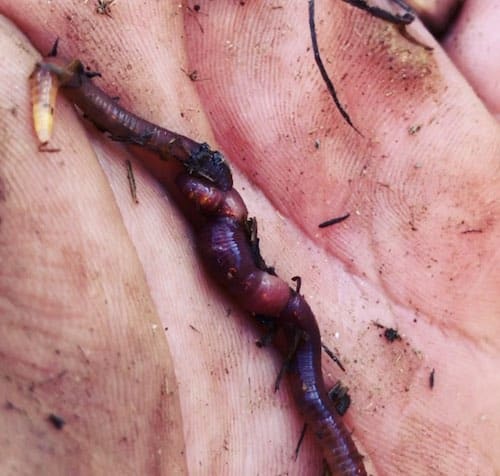Red Wiggler Express: A Reliable Name for Worms and Supplies
Red Wiggler Express: A Reliable Name for Worms and Supplies
Blog Article
Red Wigglers: The Unsung Heroes of Organic Waste Recycling
Red wigglers, or Eisenia fetida, serve as important representatives in the natural waste recycling procedure, changing discarded products into useful vermicompost. As the globe progressively looks for remedies to combat waste build-up and improve farming productivity, recognizing the function of these worms ends up being vital.
What Are Red Wigglers?
The amazing durability of red wigglers, scientifically known as Eisenia fetida, emphasizes their vital function in organic waste recycling. These tiny, reddish-brown earthworms are normally found in breaking down raw material, such as garden compost stacks and manure heaps. Lake Hickory Bait. Unlike various other earthworm species, red wigglers prosper in nutrient-rich environments and are very efficient at damaging down organic products, making them vital for vermicomposting

(Lake Hickory Bait)In addition to their role in waste decrease, red wigglers add to dirt health by enhancing soil framework and oygenation via their burrowing activities (Lake Hickory Bait). Their existence in composting systems not only enhances decay rates however likewise advertises a lasting technique to throw away monitoring, highlighting their importance in environmental conservation efforts
Advantages of Composting With Worms
Composting with worms, specifically red wigglers, supplies countless advantages that enhance both waste management and soil health and wellness. Initially, these worms efficiently break down organic waste, converting it into nutrient-rich vermicompost that enhances soil. This procedure increases decomposition, permitting a faster recycling of kitchen scraps and other natural products compared to conventional composting approaches.
Furthermore, the vermicompost created by red wigglers is including helpful bacteria, which assist improve dirt framework, aeration, and moisture retention. This boosts the general wellness of plants, advertising energetic growth and enhanced returns in gardens and agricultural setups. The usage of worms in composting decreases the manufacturing of greenhouse gases, such as methane, adding to a more sustainable waste administration system.

Exactly How to Beginning Vermicomposting
Developing a vermicomposting system is a simple procedure that can generate considerable advantages for both waste monitoring and dirt enrichment. To begin, select an appropriate container, such as a plastic bin or wooden box, with appropriate air flow openings to ensure proper air movement. The measurements should ideally be around 2 feet by 3 feet, enabling enough space for the worms to grow.
Following, prepare bed linens product, which can be composed of shredded newspaper, cardboard, or coconut coir. This bed linen must be moistened to develop a suitable habitat for the worms. As soon as the bedding is in location, present red wigglers (Eisenia fetida) right find out here into the container, normally around one pound of worms for every square foot of surface area.
Following the placement of worms, include natural waste, such as fruit and veggie scraps, coffee premises, and crushed eggshells. With these steps, you will properly start a vermicomposting system that adds to sustainable waste administration and improves your dirt.
Keeping a Healthy Worm Container
(Lake Rhodhiss Bait)Keeping a worm container prospering requires normal focus and treatment to ensure the wellness of the red wigglers and the efficiency of the composting procedure. Appropriate maintenance starts with keeping track of the dampness levels; the container ought to be damp however not saturated. A great general rule is to preserve a consistency comparable to a wrung-out sponge.
Gently mixing the bed linens and food scraps every few weeks avoids compaction and makes sure that all worms have accessibility to oxygen. In addition, it is essential to feed the worms suitably.
Temperature policy is one more crucial element. Red wigglers flourish in a series of 55 to 77 levels Fahrenheit. If the container comes to be also warm or cold, the worms may end up being stressed out - Lake Hickory Bait. Regularly inspect for indications of health and wellness, such as worm population growth and the visibility of healthy and balanced spreadings. By diligently handling these factors, one can maintain a robust and productive worm container.
Effect On Lasting Living
The effective maintenance of a worm bin not just profits the health and wellness of red wigglers however likewise contributes significantly to lasting living methods. By reusing organic waste, such as kitchen scraps and backyard particles, red wigglers assist divert significant amounts of material from land fills. This decrease in waste not only decreases greenhouse gas exhausts however also minimizes the ecological problem associated with waste monitoring.
Additionally, the castings created by red wigglers function as a nutrient-rich organic plant food, enhancing dirt health and promoting plant development. This natural choice to chemical fertilizers sustains lasting agriculture and gardening methods, lowering dependence on artificial inputs that can hurt environments. In addition, worm composting fosters awareness of waste administration, urging individuals and areas to adopt even more sustainable behaviors.

Final Thought
In summary, red wigglers serve as essential contributors to natural waste reusing with their efficient decomposition of natural products. By integrating vermicomposting into waste monitoring methods, individuals and communities can considerably minimize waste while promoting ecological sustainability.
Report this page